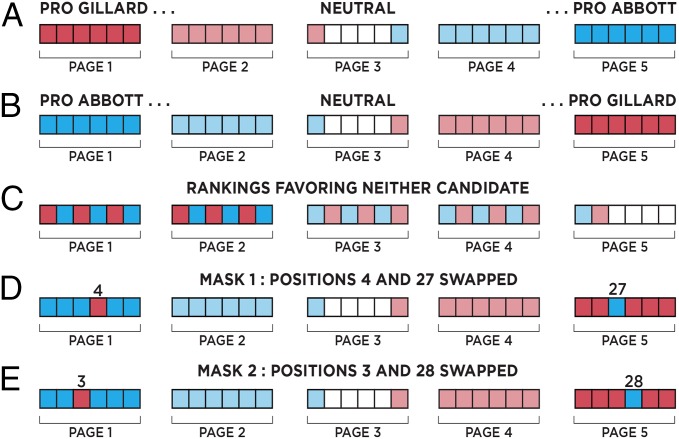Fig. 1.
Search rankings for the three experiments in study 1. (A) For subjects in group 1 of experiment 1, 30 search results that linked to 30 corresponding Web pages were ranked in a fixed order that favored candidate Julia Gillard, as follows: those favoring Gillard (from highest to lowest rated pages), then those favoring neither candidate, then those favoring Abbott (from lowest to highest rated pages). (B) For subjects in group 2 of experiment 1, the search results were displayed in precisely the opposite order so that they favored the opposing candidate, Tony Abbott. (C) For subjects in group 3 of experiment 1 (the control group), the ranking favored neither candidate. (D) For subjects in groups 1 and 2 of experiment 2, the rankings bias was masked slightly by swapping results that had originally appeared in positions 4 and 27. Thus, on the first page of search results, five of the six results—all but the one in the fourth position—favored one candidate. (E) For subjects in groups 1 and 2 of experiment 3, a more aggressive mask was used by swapping results that had originally appeared in positions 3 and 28.

